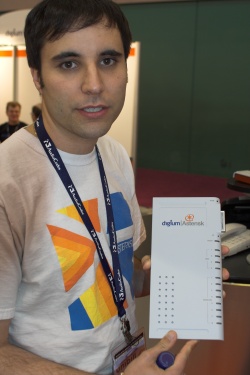Asterisk a major presence at VON 2007


I first wrote about Asterisk more than 2 years ago, and while it was already red hot back then to telecom world, it was still relatively novel to the business world, which wondered if it was mature enough for business. Now that you can't really go to a VoIP/telephony conference without seeing Asterisk everywhere, and many Telco carriers are using it in their data centers, there's no question Asterisk has become the Linux of the VoIP/telecom world. The only difference between Asterisk and Linux is that Asterisk doesn't seem to have any competitors, whereas Linux has to compete with Microsoft.
The reason I say it's VoIP and telecom is that it is really the only open source and widely adopted solution that bridges the VoIP world with the telephony world, while other projects only attempt to fill a piece of the puzzle in the VoIP space. For any company trying to sell analog PC x86-based telephony adapters, Asterisk compatibility is now the de facto standard. Asterisk can serve as a fully capable standalone system meeting all of your VoIP and telephony needs, but it can also serve in limited roles where existing investments may already be in place. When I spoke with Spencer in January, he gave me an example where someone was using Asterisk to bridge two Nortel PBXs that were incompatible with each other even though both used H.323. Another major advantage is that Asterisk has a unique ability to save you lots of bandwidth when it's used as an IAX trunk to minimize packet overhead between multiple sites and dramatically slash bandwidth consumption.